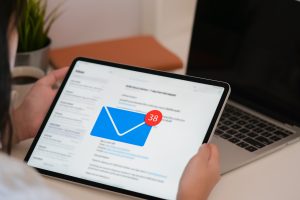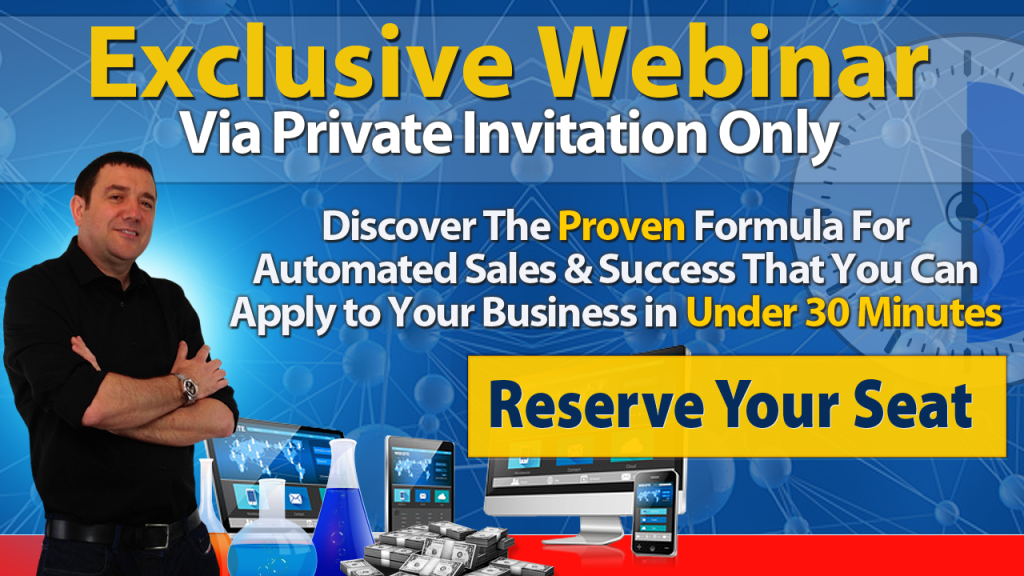
In a world overflowing with tweets, likes, and hashtags, one method of communication remains a tried-and-true champion: email. Email marketing, when done right, is a powerful tool that connects you with your audience, builds lasting relationships, and drives your business to new heights.
However, the world of email marketing is far from one-size-fits-all. It’s an intricate dance of strategy, timing, and content that can leave even the most seasoned marketers in a spin. That’s why we’re here to guide you through the intricate steps and reveal the secrets to effective email marketing. Let’s get started!
1) Difference between email marketing and list building
At the core of successful email marketing lies your email list – a valuable collection of names and email addresses, often referred to as ‘leads,’ to whom you can deliver a diverse range of messages, from informative content to promotional materials. While the process of list-building involves acquiring individuals’ email addresses and adding them to your list, it’s equally important to grasp the essence of email marketing itself. Email marketing is the art of creating and sending out these messages, a dynamic practice that engages your audience and drives your business forward. With each email you send, you have the opportunity to connect with your subscribers, foster relationships, deliver value directly to their inboxes, and raise awareness of products and services.
2) Why email marketing?
Without a well-nurtured email list, you’d find yourself in a perpetual search for new traffic, day in and day out. It’s an exhausting and never-ending pursuit. However, with an email list, you possess a powerful asset – a loyal audience you can continuously connect with and market to.
Automating our email marketing endeavors empowers us to establish a personal rapport and cultivate relationships while reaching out to thousands of customers.
3) How email marketing works
Building trust and engagement
It all starts with sending follow-up emails, but it’s not just about marketing content. To build a strong rapport and trust, consider sharing insights about your personal life and experiences, especially in the first few emails. It’s all about providing value while subtly weaving in your marketing messages. Maintaining regular contact is key, ensuring that your audience stays engaged and connected.
Timing, headlines, and email length
The nuances of timing, headlines, and email length also play an important role in your email marketing success. Think of your marketing emails as ‘pattern interrupts’ in your subscribers’ daily routines. When you send an email, it competes for attention amidst a flood of messages, especially in the mornings when inboxes are flooded with daily updates. Consider this scenario: Sending a lengthy email early in the morning, when people are rushing to work and scrolling through a sea of messages, may not yield the desired results. Lengthy emails can be overwhelming and time-consuming to read, potentially leading to them being skipped or marked for later and eventually forgotten. To maintain engagement, it’s crucial to keep your emails concise and to the point, delivering your message effectively and respecting your subscribers’ time. You should also make sure to use a compelling headline that can grab your readers’ attention instantly. This can make all the difference between your email getting clicked open or buried in the ever-growing unread pile.
So, your email marketing strategy needs to be finely tuned, considering the psychology of your subscribers and their daily habits. Messages sent during hectic mornings, when inboxes are inundated, should be concise, with a compelling headline. These elements increase the chances of your emails not only being opened but also eagerly read.
Email marketing style: Be authentic
In addition, it’s important that you use your individual voice and style in your emails. Be your authentic self, shaping your messages in your distinct style. This way, you’ll have subscribers who truly and genuinelly resonate with you.
Understanding ‘Lead Temperature’
Furthermore, understanding the concept of ‘lead temperature’ is paramount in email marketing. This term reflects the idea that not all leads are alike, and the level of engagement they’ve had with you before opting in determines the way you communicate with them in your mails. There are three main lead temperatures: ‘cold,’ ‘warm,’ and ‘hot’, each demanding a unique approach to effectively nurture and convert them.
- A ‘cold’ lead is someone who has never crossed paths with your marketing efforts and knows little to nothing about you. They require a bit more nurturing and trust-building to warm up to your messages.
- On the other hand, a ‘warm’ lead has already interacted with your brand or is familiar with your products. They need minimal persuasion to take action. For instance, imagine having a YouTube channel dedicated to skincare, and you already have subscribers who know you well. When you present them with a lead magnet, they’re primed and eager to engage because they’re already acquainted with you.
- A ‘hot’ lead is the one everyone’s after – they’re ready to make a purchase.
This means that your approach to a list of cold leads will differ significantly from your approach to a list of hot leads. It requires more trust-building, including insights about yourself in pre-written emails. On the other hand, a list of hot leads is primed for more direct marketing. Your role is to transition your leads from one ‘temperature’ to another through your marketing efforts.
Now, remember, never hesitate to email your list. After all, you’ve built it to communicate with your audience. Train your subscribers to expect your emails.
4) How email marketing doesn’t work
Trying to monetize a subscriber immediately, bombarding them with countless offers, and then moving on to the next subscriber while appearing to ‘forget’ about the first one, is a surefire way to sabotage your email marketing efforts.
5) Navigating break points in email marketing success
In the dynamic world of email marketing, there are numerous critical junctures where your prospects might drop off. These break points require careful consideration and strategic handling to maintain a successful email marketing journey.
- Getting to the Inbox (Avoiding Spam): Your journey begins with ensuring your emails reach the recipient’s inbox rather than being relegated to the dreaded spam folder. Encourage your prospects to whitelist your email address, preventing your valuable content from going unnoticed in spam. As a helpful tip, prompt your subscribers to whitelist your email during the initial sign-up process. Additional Tip on Spam Management: Consider running your emails through a tool like SpamAssassin, an email scanning tool. Most autoresponders, including AWeber, come equipped with SpamAssassin. It assigns a spam score to your emails. As a best practice, refrain from sending out emails with a spam score exceeding 1.5. If you do encounter a high spam score, take a look at the report to identify the factors leading to this classification.
- Getting Them to Open (Mastering the Subject Line): The first step to engaging your prospects is enticing them to open your emails. Craft subject lines that pique curiosity without resorting to deceptive tactics. It’s essential to maintain consistency between the subject line and the email content. You can also take advantage of your email statistics within your autoresponder to identify and reuse subject lines that have yielded high open rates. For instance, reusing subject lines that have proven effective in the past can significantly boost your open rates.
- Getting Them to Click (The Power of Sales Copy): Once your email is opened, the next challenge is to encourage your subscribers to click on your links. Effective sales copy plays an important role in achieving this goal. Similarly, analyze your email statistics to identify and repurpose high-performing email copy. This strategy allows you to maintain a level of consistency throughout your email marketing campaigns and maximize click-through rates.
- Getting Them to Buy on the Target Page: Finally, when subscribers click through to your target page, it’s important to ensure that the content is relevant to what enticed them to click in the first place. The alignment between the content in your emails and the content on your target page is crucial for converting your prospects into paying customers.
By addressing these key break points in your email marketing journey, you’ll significantly enhance the chances of delivering valuable content, maintaining subscriber engagement, and ultimately driving conversions. It’s all about keeping your prospects engaged and guiding them through each phase of your email marketing strategy.
Stay tuned for the upcoming second part, where we’ll delve deeper into further email marketing strategies to take your campaigns to the next level.
Feel free to comment below and share.
To your success,
Olivia Ressler
P.S. Until not long ago, I myself had no idea about Email Marketing as I only recently delved into the world of online marketing. I am currently doing an amazing course called ‘Partnership to Success Program’ which teaches you how to create, launch and sell a digital product. If you’re also interested in learning product creation, I highly recommend checking out this training webinar* from my mentor John Thornhill. It won’t cost you a penny and is packed with fantastic information.
I took up the coaching offer at the end of the webinar just a few weeks ago and haven’t regretted it a second. In fact, I owe the existence of this blog to the program. So check out the webinar here*.

* affiliate link/advertising link
